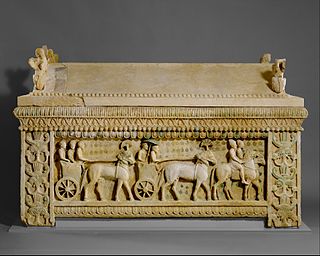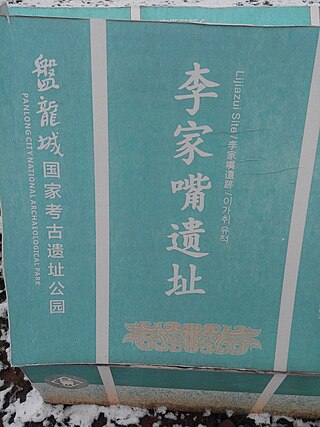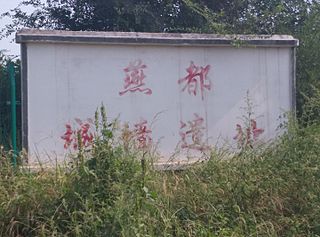Related Research Articles

Amathus or Amathous was an ancient city and one of the ancient royal cities of Cyprus until about 300 BC. Some of its remains can be seen today on the southern coast in front of Agios Tychonas, about 24 miles (39 km) west of Larnaca and 6 miles (9.7 km) east of Limassol. Its ancient cult sanctuary of Aphrodite was the second most important in Cyprus, her homeland, after Paphos.

Empúries was an ancient city on the Mediterranean coast of Catalonia, Spain. The city Ἐμπόριον was founded in 575 BC by Greek colonists from Phocaea. After the invasion of Gaul from Iberia by Hannibal the Carthaginian general in 218 BC, the city was occupied by the Romans. In the Early Middle Ages, the city's exposed coastal position left it open to marauders and it was abandoned.

Camulodunum, the Ancient Roman name for what is now Colchester in Essex, was an important castrum and city in Roman Britain, and the first capital of the province. A temporary "strapline" in the 1960s identifying it as the "oldest recorded town in Britain" has become popular with residents and is still used on heritage roadsigns on trunk road approaches. Originally the site of the Brythonic-Celtic oppidum of Camulodunon, capital of the Trinovantes and later the Catuvellauni tribes, it was first mentioned by name on coinage minted by the chieftain Tasciovanus some time between 20 and 10 BC. The Roman town began life as a Roman legionary base constructed in the AD 40s on the site of the Brythonic-Celtic fortress following its conquest by the Emperor Claudius. After the early town was destroyed during the Iceni rebellion in AD 60/61, it was rebuilt, reaching its zenith in the 2nd and 3rd centuries. During this time it was known by its official name Colonia Claudia Victricensis, often shortened to Colonia Victricensis, and as Camulodunum, a Latinised version of its original Brythonic name. The town was home to a large classical temple, two theatres, several Romano-British temples, Britain's only known chariot circus, Britain's first town walls, several large cemeteries and over 50 known mosaics and tessellated pavements. It may have reached a population of 30,000 at its height.

Yinxu is the site of one of the ancient and major historical capitals of China. It is the source of the archeological discovery of oracle bones and oracle bone script, which resulted in the identification of the earliest known Chinese writing. The archeological remnants known as Yinxu represent the ancient city of Yin, the last capital of China's Shang dynasty which existed through eight generations for 255 years, and through the reign of 12 kings. Yinxu was discovered, or rediscovered, in 1899. It is now one of China's oldest and largest archeological sites, and was selected as a UNESCO World Heritage Site in 2006. Yinxu is located in northernmost Henan province near the modern city of Anyang, and near the Hebei and Shanxi province borders. Public access to the site is permitted.

Gournia is the site of a Minoan palace complex on the island of Crete, Greece, excavated in the early 20th century by the American archaeologist, Harriet Boyd-Hawes. The original name for the site is unknown. The modern name comes from the abundant hollow vessels found all over the site. Gournia lies in the municipality of Ierapetra in the prefecture of Lasithi.

The Liangzhuculture or civilization was the last Chinese Neolithic jade culture in the Yangtze River Delta. The culture was highly stratified, as jade, silk, ivory and lacquer artifacts were found exclusively in elite burials, while pottery was more commonly found in the burial plots of poorer individuals. This division of class indicates that the Liangzhu period was an early state, symbolized by the clear distinction drawn between social classes in funeral structures. A pan-regional urban center had emerged at the Liangzhu site in northwestern Hangzhou, Zhejiang, and elite groups from this site presided over the local centers. The Liangzhu culture was extremely influential and its sphere of influence reached as far north as Shanxi and as far south as Guangdong. The primary Liangzhu site was perhaps among the oldest Neolithic sites in East Asia that would be considered a state society. The type site at Liangzhu was discovered in Yuhang County, Zhejiang and initially excavated by Shi Xingeng in 1936.

Sanxingdui is an archaeological site and a major Bronze Age culture in modern Guanghan, Sichuan, China. Largely discovered in 1986, following a preliminary finding in 1927, archaeologists excavated artifacts that radiocarbon dating placed in the twelfth–eleventh centuries BC. The archaeological site is the type site for the Sanxingdui culture that produced these artifacts, archeologists have identified the locale with the ancient kingdom of Shu. The artifacts are displayed in the Sanxingdui Museum located near the city of Guanghan.

Edfu is an Egyptian city, located on the west bank of the Nile River between Esna and Aswan, with a population of approximately 60,000 people. Edfu is the site of the Ptolemaic Temple of Horus and an ancient settlement, Tell Edfu. About 5 km (3.1 mi) south of Edfu are remains of ancient pyramids.

The Qijia culture was an early Bronze Age culture distributed around the upper Yellow River region of Gansu and eastern Qinghai, China. It is regarded as one of the earliest bronze cultures in China.

The Erligang culture is a Bronze Age urban civilization and archaeological culture in China that existed from approximately 1600 to 1400 BC. The primary site, Zhengzhou Shang City, was discovered at Erligang, within the modern city of Zhengzhou, Henan, in 1951.

Panlongcheng or Panlong City is an archaeological site associated with the Erligang culture during the Shang dynasty period. The site is located just north of the Yangtze river, on the bank of the Panlong lake, and is surrounded by the Fushui river in Huangpi, Wuhan, Hubei, China. Panlongcheng is the largest excavated Erligang site, showing the southernmost reach of the Erligang culture at its peak. It was discovered in 1954, and excavated in 1974 and 1976.

The Dayangzhou Chengjia site is an archaeological site located on the Gan River in Dayangzhou Town, Xingan County, Jiangxi, China. The site was excavated in 1989, and it dates to around 1200 BCE. The rich offerings of bronze and jade objects made it the second richest burial site known after the Fu Hao's tomb.

Metallurgy in China has a long history, with the earliest metal objects in China dating back to around 3,000 BCE. The majority of early metal items found in China come from the North-Western Region. China was the earliest civilization to use the blast furnace and produce cast iron.
King Cuo of Zhongshan was the fifth ruler of the state of Zhongshan during the Warring States period in ancient China. He reigned for 15 years. In 323 BC, he styled himself "king" along with the rulers of Han, Wei, Yan and Zhao, becoming the first ruler of Zhongshan to do so.

Tell el-Dab'a is an archaeological site in the Nile Delta region of Egypt where Avaris, the capital city of the Hyksos, once stood. Avaris was occupied by Asiatics from the end of the 12th through the 13th Dynasty. The site is known primarily for its Minoan frescoes.

The Western Zhou Yan State Capital Museum is an archaeological museum in southwestern Beijing Municipality at the site of the capital of the ancient State of Yan during the Western Zhou dynasty. The site is located in Dongjialin Village, just north of Liulihe Township (琉璃河镇), in Fangshan District, 43 km (27 mi) south of Beijing's city centre. During the Western Zhou dynasty, over 3,000 years ago, the walled settlement at Liulihe, as the site is also known, served as the capital of the Yan, a vassal state of the Zhou dynasty. The discovery of the site in 1962 is considered to be one of the 100 major archaeological discoveries in China during the 20th century. Artifacts from the site including engraved bronze ware and chariots provide the earliest archaeological evidence of urban settlement in Beijing Municipality. The museum at the site, operated by the municipal government, opened in 1995.
Ji or Jicheng was an ancient city in northern China, which has become the longest continuously inhabited section of modern Beijing. Historical mention of Ji dates to the founding of the Zhou dynasty in about 1045 BC. Archaeological finds in southwestern Beijing where Ji was believed to be located date to the Spring and Autumn period. The city of Ji served as the capital of the ancient states of Ji and Yan until the unification of China by the Qin dynasty in 221 BC. Thereafter, the city was a prefectural capital for Youzhou through the Han dynasty, Three Kingdoms, Western Jin dynasty, Sixteen Kingdoms, Northern Dynasties, and Sui dynasty. With the creation of a Jizhou (蓟州) during the Tang dynasty in what is now Tianjin Municipality, the city of Ji took on the name Youzhou. Youzhou was one of the Sixteen Prefectures ceded to the Khitans during the Five Dynasties. The city then became the southern capital of the Liao dynasty and then main capital of the Jin dynasty (1115–1234). In the 13th century, Kublai Khan built a new capital city for the Yuan dynasty adjacent to Ji to the north. The old city of Ji became a suburb to Dadu. In the Ming dynasty, the old and new cities were merged by Beijing's Ming-era city wall.
Xituanshan is a Late Bronze Age group of stone burials in Jilin, China. It was designated a Major National Historical and Cultural Site by the Chinese government in 2001.
Yejiashan Cemetery is an ancient Western Zhou cemetery and archaeological site in Suizhou, Hubei, China. Extensive archaeological excavations at Yejiashan have uncovered 65 tombs and one horse pit, recovering over 700 artifacts including ceramic and proto-porcelain vessels, bronzes, and jades. Notably, some bronzes have inscriptions of “Zeng 曾”, “Hou 侯 (marquis)”, “Zeng Hou 曾侯 ”, “Zeng Hou Jian 曾侯谏 ”. This evidence, combined with the style of the other burial goods, suggests that Yejiashan Cemetery was the family cemetery of the Marquis of Zeng in the early Western Zhou Dynasty. Archaeological research at Yejiashan Cemetery has significantly bettered our understanding of the relationships between the Zeng, E (噩), and Chu states to the east of the Han River in the early Western Zhou.

Majiayuan (Ch:马家垸遗址) is an 3rd-2nd century BCE archaeological site in Gansu, China. The site is considered as belonging to rulers of the culture of the Xirong, recently subjugated by the state of Qin, who included them within the defensive wall of King Zhao of Qin, built in 271 BCE. It is rather similar to another Xirong site about 50 km away, the Wangjiawa cemetery (王家洼墓地). Majiayuan was a zone of interraction between the Chinese and their nomadic neighbours to the west and north during the Warring States period.
References
- ↑ George Modelski, World Cities: –3000 to 2000, Washington DC: FAROS 2000, 2003. ISBN 0-9676230-1-4.
- ↑ 西周燕都遗址博物馆
- Allan, Sarah (ed), The Formation of Chinese Civilization: An Archaeological Perspective, ISBN 0-300-09382-9